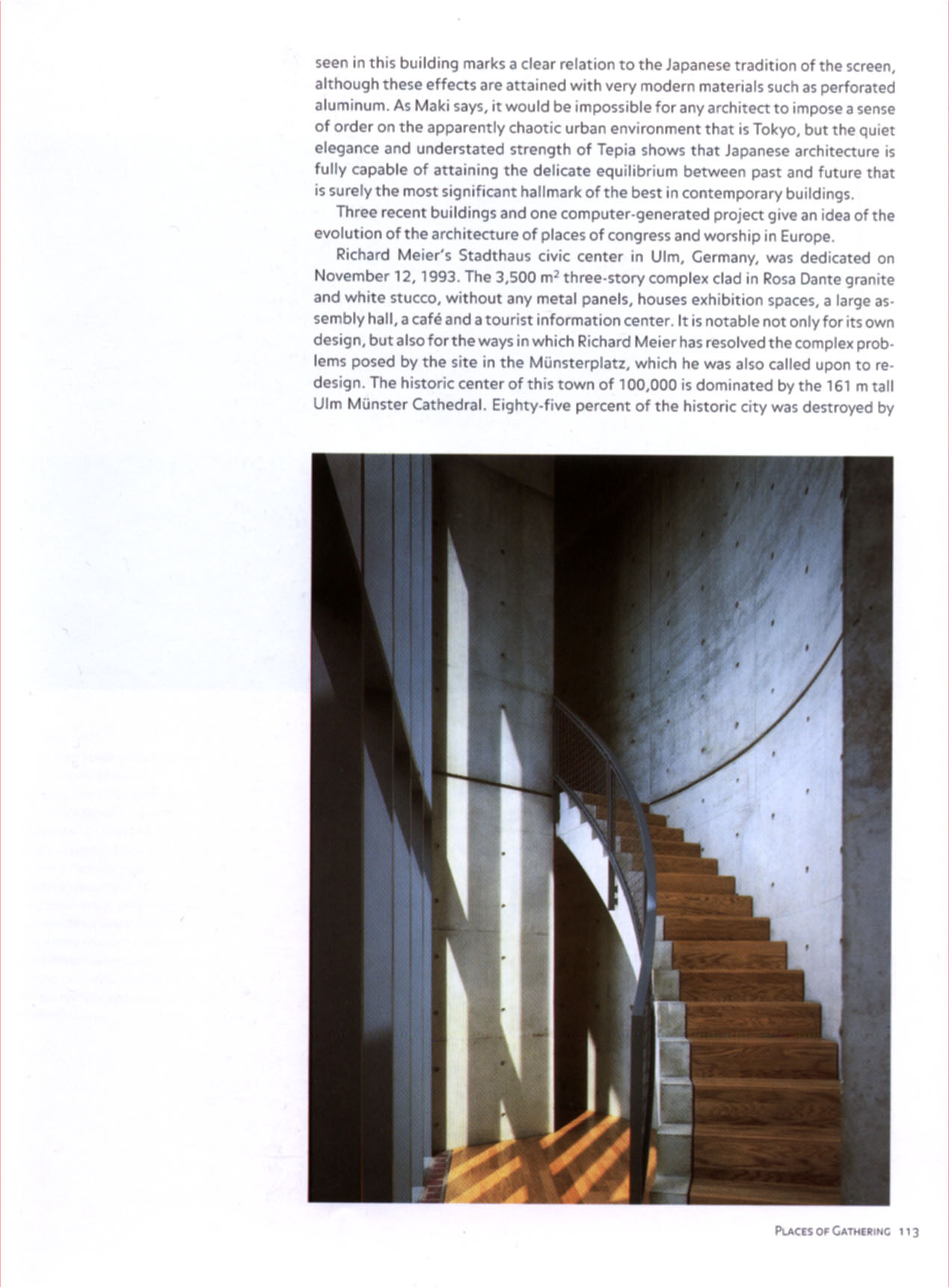New Forms Taschen 105

seen in this building marks a elear relation to the Japanese tradition of the screen, although these effects are attained with very modern materials such as perforated aluminum. As Maki says, it would be impossible for any architect to impose a sense of order on the apparently chaotic urban environment that is Tokyo, but the quiet elegance and understated strength of Tepia shows that Japanese architecture is fully capable of attaining the delicate equilibrium between past and futurę that is surely the most significant hallmark of the best in contemporary buildings.
Three recent buildings and one computer-generated project give an idea of the evolution of the architecture of places of congress and worship in Europę.
Richard Meier's Stadthaus civic center in Ulm, Germany, was dedicated on November 12,1993. The 3,500 mJ three-story complex clad in Rosa Dante granite and white stucco, without any metal panels, houses exhibition spaces, a large as-sembly hall, a cafe and a tourist information center. It is notable not only for its own design, but also for the ways in which Richard Meier has resolved the complex prob-lems posed by the site in the Munsterplatz, which he was also called upon to re-design. The historie center of this town of 100,000 is dominated by the 161 m tali Ulm Munster Cathedral. Eighty-five percent of the historie city was destroyed by

Places or Catherinc 113
Wyszukiwarka
Podobne podstrony:
New Forms Taschen 048 Transport, Communications, Tali Buildings and the Urban Nomad Continuing urban
New Forms Taschen 053 that his blighted northern city was included at the last moment in the route t
New Forms Taschen 158 Cuba, in January 1995 gave rise to his Havana Project, which is a proposal for
New Forms Taschen 190 Samitaur in Culver City challenges the use of urban space in a slightly differ
New Forms Taschen 006 Art in New York. Uniting mostly unbuilt work by Frank O. Gehry, Daniel Libeski
New Forms Taschen 108 bombing in 1944, and the reconstruction of Ulm was carried out without much re
New Forms Taschen 022 Pages24/25 Alessandro Mendini ef a/. Groninger Museum Groningen, The Neth
więcej podobnych podstron